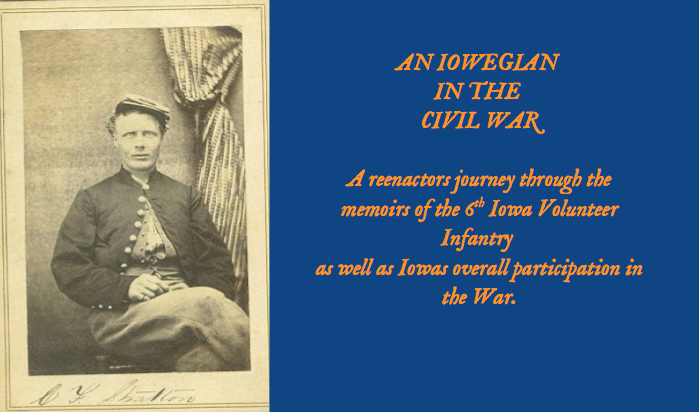 |
| David Moore, Colonel |
Missouri Home Guard troops. However because of men on leave he had only 333 men on the line. These men were new recruits and armed with varied weapons and accoutrements. The opposing force was commanded by Colonel Martin Green and was composed of 2,000 secessionist Home Guard troops.
 |
| Martin Green, Colonel |
As Col. Moore prepared to defend Athens men from the 6th Iowa were marched to a building to receive arms for the purpose of reenforcing Athens. This is the account:
"Three companies of the Sixth Regiment — Company D,
Captain Walden commanding, Company I, Captain Brydolf commanding, and Company K, Lieutenant White
commanding, were marched to a large building near the
levee, where new Springfield muskets, with accouterments
and ammunition were issued to the men, and then the
command was immediately embarked on board cars on the
Des Moines Valley Railroad, and started for the scene of
threatened hostilities."
They apparently encountered more messengers on the way that had news that the rebel troops had pushed the Union boys across the Iowa line. The left flank commanded by Lieutenant Colonel Charles S. Callihan did falter as the confederate advance name him nervous. The rest of the line held.
Colonel Martin's men were ill equipped compared to that of the defenders of Athens.
As the union train approached Colonel McDowell ordered "...cartridges
distributed to the men, guns loaded, bayonets fixed and
every man standing ready to leap from the car when the
train arrived at the depot."
When the rebels saw the train they made a hasty retreat and the battle was over before the 6th Iowa could see any action.
The troops unloaded from the cars to warm reception and soon were given orders.
"McDowell ordered the men to take off their shoes and
stockings, roll up their pants and proceed to wade the
Des Moines River, which was knee deep and about two
hundred yards wide. It was soon learned that Colonel
Martin Green with his band of Missouri secessionists
had abandoned the field and fled south in a demoralized
condition. The only participation had in the affair after
arriving on the field was by a detail of advance skirmishers, who fired a few parting shots at some stragglers in
the rear of the enemy's fleeing forces."
Here was another account of the battle given.
" According to accounts given, a force, said to be fifteen
hundred armed men with three pieces of artillery, had
charged in at daylight upon the three hundred Union men
occupying the hamlet of Athens, pouring in volleys of
musketry, yelling like demons, firing solid shot and dis-
charges of slugs from their cannon, most of which were
aimed high and passed over the river where they lodged
in the low hills back of Croton. The battle raged with
great fury for several hours, the Union men holding sub-
stantially their position in the town. When the reinforcements were seen approaching, the Union men took
courage and charged with great gallantly, dispersing the
enemy in uttor rout and confusion. There were two
Union men killed in the affair and fifteen wounded; the
loss of the enemy was never definitely reported, but was
believed to be more than double that of the Union side."
Later under a flag of truce the rebels recovered their dead. The Union troops set out pickets and were prepared to answer an attack, sleeping on their arms as to be ready.
The next day at 5pm the company's of the 6th were loaded onto cars and sent to Keokuk where they arrived at 6pm to much applause.
The arms they had received for the battle of Athens were returned.










